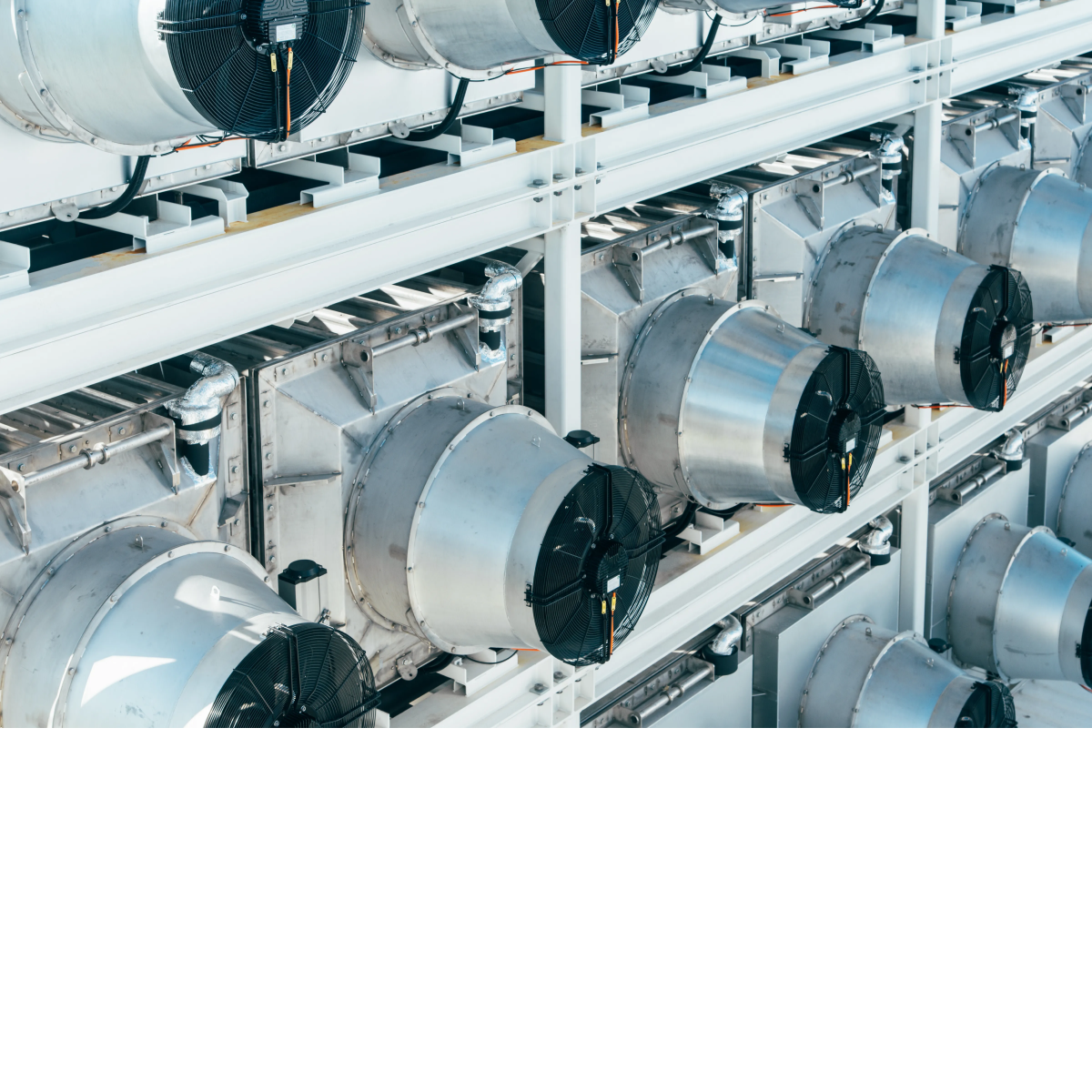Direct air capture technologies pull CO₂ out of the air, typically using giant fans to move massive amounts of air. The carbon dioxide is separated from the other elements in the air and stored permanently in a variety of repositories; the carbon is usually stored underground or in rocks, but it can also be used in building materials like concrete and to create products like aviation fuels. While the technology behind DAC isn’t new — it’s been powering systems in submarines and space for decades — the application of DAC in the climate space is. That technological advantage, along with early investment and policy wins, has made DAC a critical tool in meeting our climate goals.

How DAC works
While there’s far too much in the atmosphere today, CO₂ still only makes up about 0.04% of our air. At this concentration, the first thing DAC plants need to do is funnel a lot of air through their systems so that they can separate meaningful amounts of CO₂ from all of the other gases.
Most DAC plants rely on giant fans to make that happen. Once inside, the CO₂ bumps into and binds with a special, carbon-loving solvent or sorbent. This reaction strips the CO₂ from the rest of the gases so that it can be compressed for its next chapter.
There are a number of options for what to do with the compressed carbon once we’ve reached this point. In most cases, it’s injected underground in a process called geologic storage. The CO₂ is sent deep into the earth, making its way through many layers of porous rock, where it’s sealed for permanent storage and monitored carefully to make sure it stays there.

Benefits and opportunities
Cost estimates for DAC currently sit between $152-$398 per ton based on the latest assessments and adjusted for inflation. To hit gigaton scale by 2050, experts say we need that price tag to drop below $100 per ton — recent studies tell us it can. Well-designed policies and deployment incentives can help rapidly improve technologies and drive costs down, making DAC a leader on a few key dimensions.
-
Economics
DAC has the potential to be a global business by mid-century. At full scale, it could create at least 300,000 new jobs in construction, engineering, and manufacturing. Plus, there’s an estimated $1 trillion market for carbontech, or products made from captured CO₂.
-
Scalability
The modular design of many DAC plants means these facilities can be scaled up while keeping a small physical footprint compared to other forms of carbon removal.
-
Monitoring, reporting, and verification
Because DAC facilities are such contained spaces, it’s easy to gauge exactly how much CO₂ is flowing through them. However, measuring lifecycle CO₂ emissions and net removal can be trickier and requires information from outside the facility boundary.
Challenges and considerations
Today there are roughly 130 DAC plants planned and operating, with the largest removing 36,000 tons of CO₂ per year in Iceland. In order for DAC to make a meaningful impact on our climate, we need to ramp up demand, drive down costs, and supercharge the sector’s innovation — all while centering justice, equity, and accountability.
For DAC to be successful long term, it’s important that project benefits flow to local communities in the form of high-quality jobs, environmental and health benefits, and more.
It’s equally important to understand the full energy and environmental impacts, as DAC plants are energy- and water-intensive operations. While DAC has a relatively small physical footprint, the infrastructure required to power it can be significant. Naturally, many communities have questions and concerns about the safety of carbon transport and storage near them. As a new industry, DAC actors have the opportunity — and the responsibility — to set high standards for permitting and monitoring new projects that center the input of local communities.
The US has invested billions in DAC — now is the time to defend and build on those policy wins, ensuring the sector stays focused on climate and delivers real benefits to communities nationwide.
Erin BurnsExecutive Director
DAC policy outlook
The momentum behind DAC is growing, especially from a policy perspective. 2020 was a turning point for public funding, with Congress more than tripling its prior investments in DAC.
By late 2021, that number had grown tenfold thanks to major carveouts for DAC in the Infrastructure Investment and Jobs Act. This put $3.5 billion toward establishing four regional DAC hubs over five years, lining up the first large-scale deployment of DAC in the US. The US Department of Energy (DOE) announced the first slate of project selections in August 2023, with $1.2 billion awarded for two commercial-scale plants in Louisiana and Texas and 19 other earlier-stage DAC hub projects. Last December, DOE announced a second tranche of funding for DAC hubs totaling $1.8 billion.
While DOE has been the main steward of DAC efforts, scaling and overseeing such a rapidly evolving field is a highly collaborative, interagency effort. The Environmental Protection Agency and a growing number of state regulators issue permits for underground storage of CO₂ and monitor the injection site long after it’s been sealed. The Department of the Interior is another key player — it’s their job to interpret environmental laws to make construction decisions around any DAC facilities potentially built on federal lands.
To scale DAC well, all of these agencies must work in close partnership with community leaders, climate entrepreneurs, and local representatives to create a new system centered on scientific and societal needs, ensuring that DAC can enable a future that’s better than our past.


